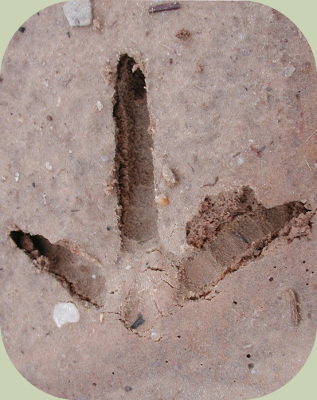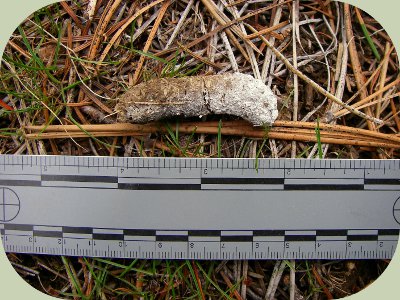Recognizing Wild Turkey Habitat
Learning more about wild turkey habitat can help you to better understand the wild turkey. Whether you’re a naturalist, a hunter or are simply interested in learning more about wild turkeys, knowing their habitat will help you to better understand these fascinating birds.
Recognizing Wild Turkey Habitat:
What makes good turkey habitat?
Wild turkeys live in a variety of habitats throughout North America. The key to good turkey habitat is good cover and good forage. Turkeys roost in trees at night, and so depend on woodlands for safety at night. Turkeys can be found habitats such as: eastern broadleaf forests, clearings and meadows, open forests, wooded swamps, gulf coast live oak forests, south Texas forests, California coastal forests and riparian forests, and ponderosa pine forests.
What do wild turkey, like to eat?
All of the best habitats included a variety and abundance of food wild turkeys eat such as berries, seeds, nuts, insects, and a variety of green forage. Turkeys are also known to eat a variety of cultivated crops such as: soybeans, corn, sorghum, wheat, oats, ryegrass, and chufa. Where woodlands and farmlands meet, wild turkey may be seen foraging in farm fields, especially after harvest.
How do you know turkeys are around?
Wild turkeys can be detected by paying attention to a variety of signs. Turkeys spend a great deal of time walking around on the ground, but they can be wary and elusive animals to spot, especially where they are hunted. Knowing how to recognize turkey tracks and sign is often very helpful.

Tracks: The tracks of wild turkey are a classic game bird track (three toes forward with one small toe in back). They are impressively large, with 3 large, bulbous toes and a shorter back toe, which usually only registers as a claw impression. The tracks measure: 3 3/4 - 5 inches long by 4 – 5 1/2 inches wide.

Scat: Male and female scats are different shapes. The scats of males – called toms – are up to 3” long by 3/8” to 5/8” in diameter, generally cylindrical often with one end terminating in a hook or ‘J' shape. Female scats are 3/16” to 3/8” in diameter, and are more amorphous lumps. Both scats often have one whitish end, where the uric acid was expelled.
Be More Prepared For Your Next Outdoor Adventure!

Don't leave without knowing these six essential survival skills. Our free survival mini guide reveals the strategies of:
- Shelter & fire to prevent the number one cause of death
- Obtaining clean water to avoid life-threatening dehydration
- Common wild survival foods and other critical skills!

Gait: Turkeys spend much of their time walking, but will also run. Walking gaits have a stride length of between 5” to 13” long. Meanwhile, running gaits have a stride length that can be up to 33” long.
Other sign: Wild turkey habitat often includes other signs of turkeys. One such sign are dust baths, which measure between 14” and 20” in diameter and tend to be 1” to 3” in depth.
Similar Tracks: Due to their size, wild turkey tracks are not often confused with the tracks of other birds. Canada geese have tracks of similar size, but they have distinct webbing between their toes. These geese are generally not found far from the water's edge. Sandhill cranes also have similar sized tracks, however, their toes are less bulbous and their strides tend to be much longer.
Closing thoughts
Being able to recognize wild turkey tracks and sign, and knowing what kinds of landscape features they are attracted to, will help you develop a better search image for turkey habitats. With this knowledge you will improve your ability to find and observe these beautiful and wary birds.
By the way, when you're out tracking or looking for wild animals, it's important to know how to stay safe in the outdoors, especially if you were to get lost. Right now you can get a free copy of our mini survival guide here, where you'll discover six key strategies for outdoor emergencies, plus often-overlooked survival tips.
Additional Resources:
Wild Turkey Habitat Management
Wild Turkey Habitat Info from Cornell
Related Courses:

About the Author: Filip Tkaczyk is a periodic guest teacher at Alderleaf. He also wrote the field guide Tracks & Sign of Reptiles & Amphibians. Learn more about Filip Tkaczyk.
Return from Wild Turkey Habitat back to Wildlife Tracking Articles
Is The Essential Wilderness Survival Skills Course Right for You? Take the "Online Survival Training Readiness" Quiz
See for yourself if this eye-opening course is a good fit for you. It takes just a few minutes! Get your Survival Training Readiness Score Now!

Grow Your Outdoor Skills! Get monthly updates on new wilderness skills, upcoming courses, and special opportunities. Join the free Alderleaf eNews and as a welcome gift you'll get a copy of our Mini Survival Guide.

 The Six Keys to Survival: Get a free copy of our survival mini-guide and monthly tips!
The Six Keys to Survival: Get a free copy of our survival mini-guide and monthly tips!
Learn more